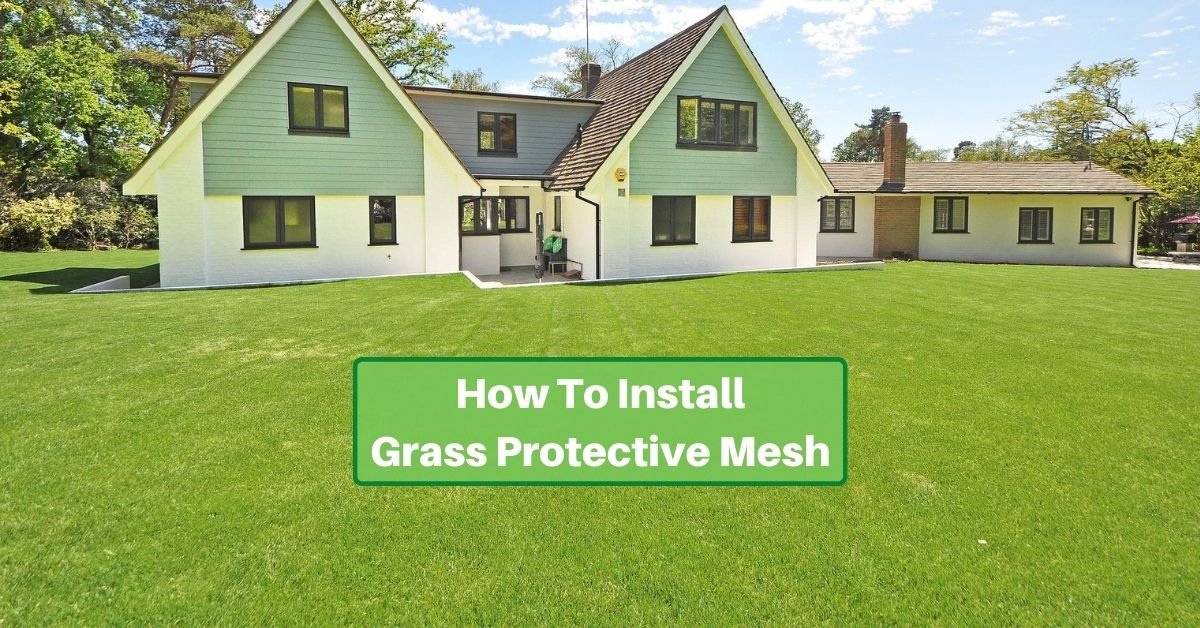No one wants a lawn full of muddy ruts and brown grass. But sometimes, it’s necessary to park on the grass or to allow foot traffic across it. That doesn’t mean you’re doomed to a mess, though! When you know that your lawn could suffer from such damage, it’s a good idea to use protective mesh.
What Is Grass Protection Mesh
Grass protection mesh is a heavy-duty protective screen that lies on the ground. The grass grows through the spaces but its roots are protected by the mesh.
There are various grades of mesh designed for different types of traffic. Lighter mesh will stand up to light foot traffic. The heaviest versions support light vehicles. A range of options in between these can support heavier foot traffic, wheelchairs, garden machinery, and the like.
The mesh is most often made of durable plastic. In general, it’s either green or black so that it can disappear in the grass.
When To Install
If you want to install grass protection mesh on your lawn, we recommend you do it in spring. The grass is vigorous at this time since you’ve been fertilizing it. It also gets plenty of water, either through rainfall or because you’ve been watering it.
The grass will have a chance to grow up through the mesh while the weather is still mild. And since it’s growing, it will be able to support this change to its environment.
Steps To Take To Install Grass Protection Mesh
Installation of this protection mesh is simple. You’ll need to do some cleanup with basic yard tools, and a mallet might come in handy.
Level any ruts or bumps
The mesh will only be effective if it’s installed on ground that’s nearly level and flat. If you need to fill in any areas, do so well ahead of when you want to lay your mesh that you can also seed the area and allow the grass to take root.
Remove debris
Before you lay out your mesh, you’ll want to be sure the area is clear of any rocks, branches, or other debris. Rake everything up and be sure nothing will be stuck between the mesh and the ground.
Cut the grass short
Cut your grass to about one inch high before installation. This may be shorter than normal, but it helps the mesh get a good “fit” against the ground.
Unroll mesh and give it time to flatten
Once the space is clear, it’s time to unpack your mesh. It usually comes rolled up, so you’ll want to unroll it. Allow it time for the bends to flatten out before trying to fasten it down.
Once it’s flat, start to place it over the area where it’s needed. Make sure to place pieces tightly against each other. Some types may suggest overlapping pieces; be sure to read the instructions.
Pin with U-pins
Of course, you’ll need to fasten the mesh down. U-pins are the ideal piece of hardware for this. Your mallet will come in handy to drive them into the ground.
Start at a corner
Pick one of the corners on the outer edge of the mesh to place the first U-pin. Hammer it in firmly.
Add pins diagonally, spacing appropriately
To get the best results, it’s helpful to move on an angle. So for your second pin, move about a foot down and a foot in from the edge. Then another foot over and down, until you reach the far edge. Do this only for the first set to hold the mesh in place.
Afterward, space the pins about a foot apart along the edges. In the middle, space them about two feet apart.
Ongoing care
It won’t be hard to take care of your mesh once it’s installed. We do have a couple of suggestions, though.
Set mower higher
For the first few mows after installation of the mesh, let the grass grow an extra half-inch or inch before cutting it. Don’t cut it down farther than usual. This allows it to grow stronger and for the mesh to attach more firmly to the ground.
Check U-pins seasonally
Occasionally, as the soil shifts, some U-pins may become loose. You’ll likely notice this when mowing the lawn or even walking across the area. We recommend that you take a garden rake slowly across the mesh area in the spring and the fall to see if it catches on any loose pins. If you find any, you can hammer them back in with a mallet or simply step on them firmly.
Conclusion
Grass protective mess is a great way to protect your lawn from pedestrians and vehicles alike. It’s easy to install, too! You’ll love how your grass will stay green and healthy even when you use it for parking or if it’s a quick shortcut around the corner!









